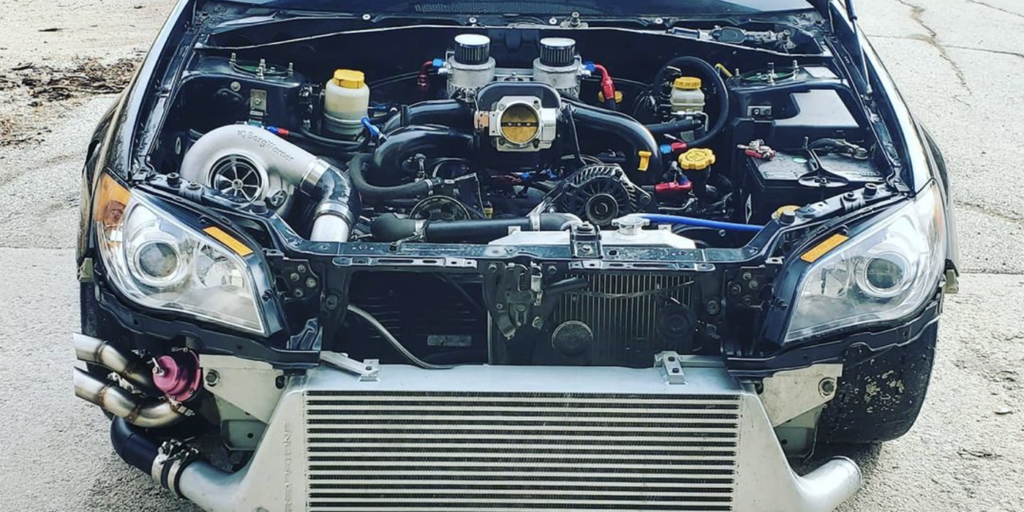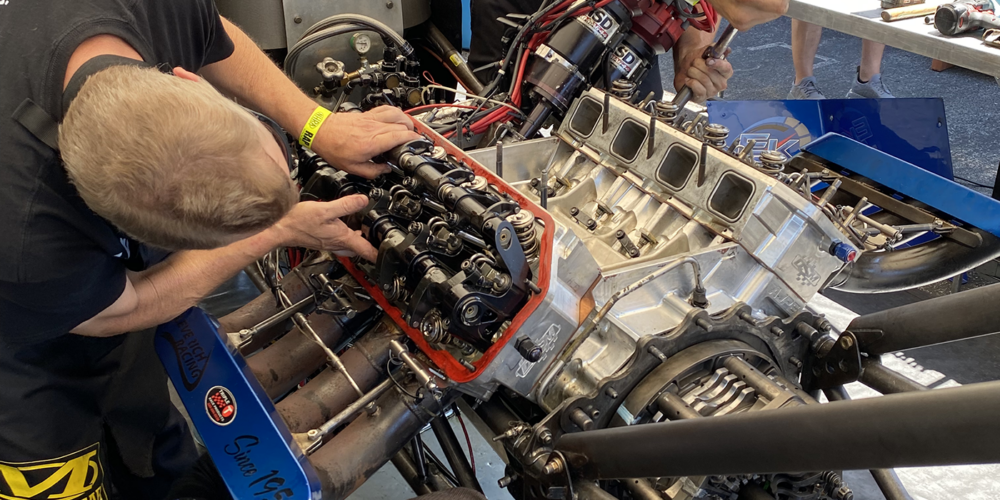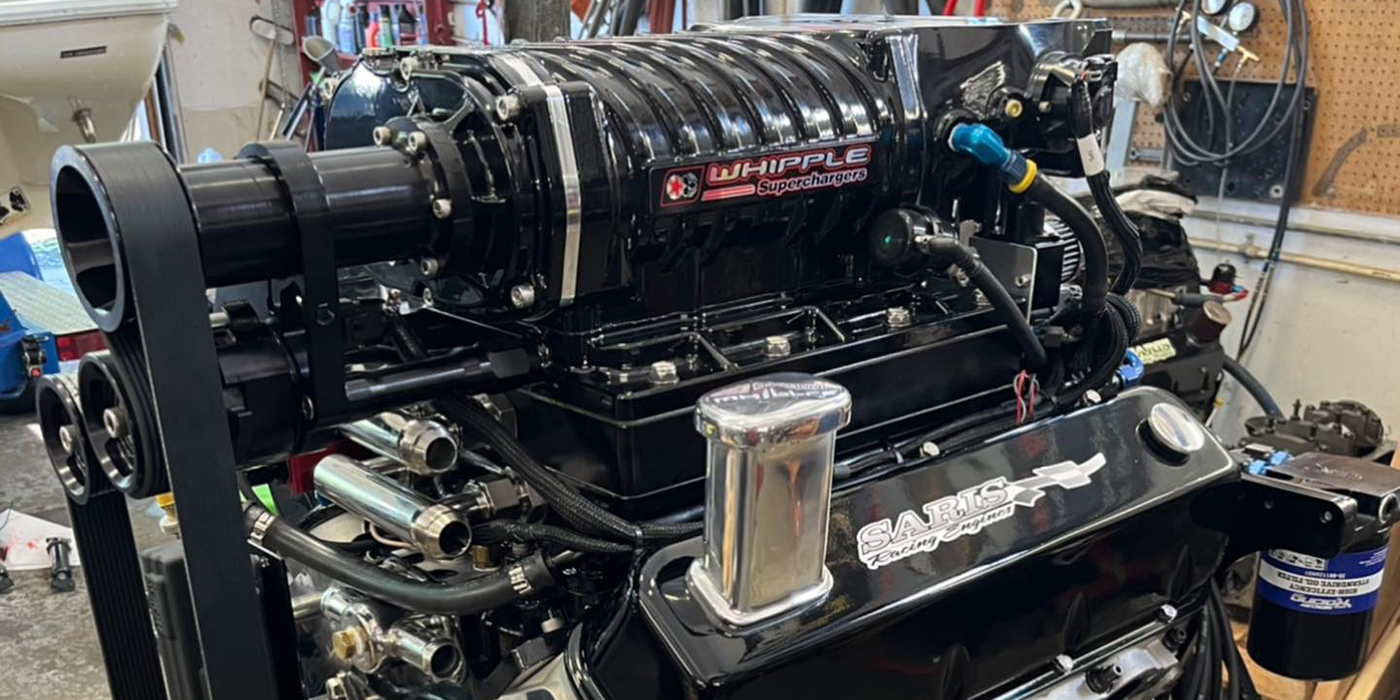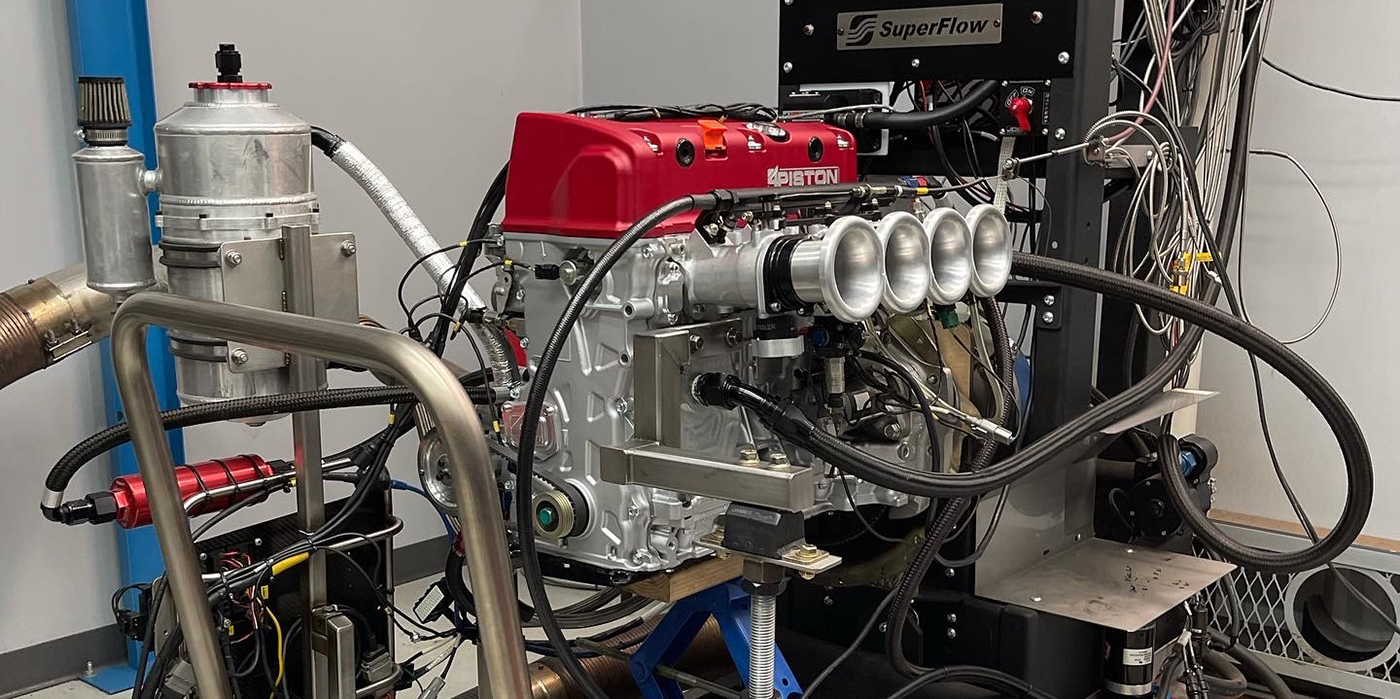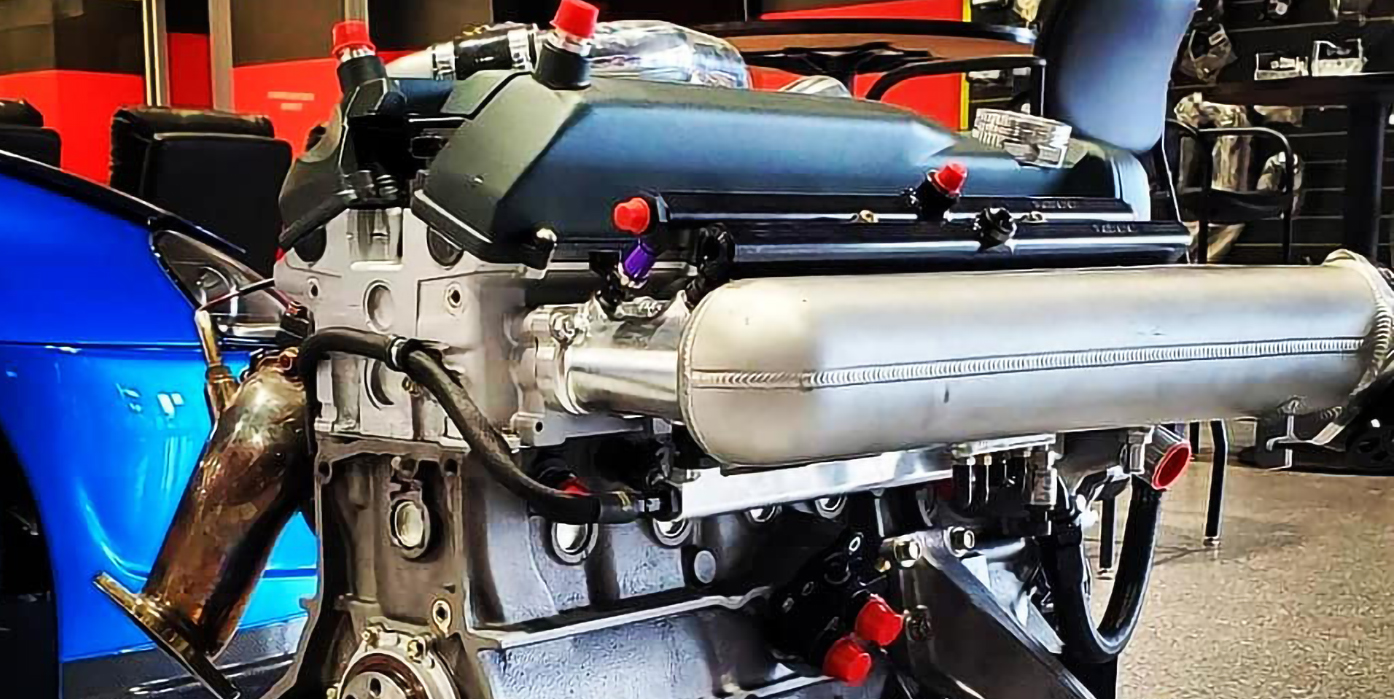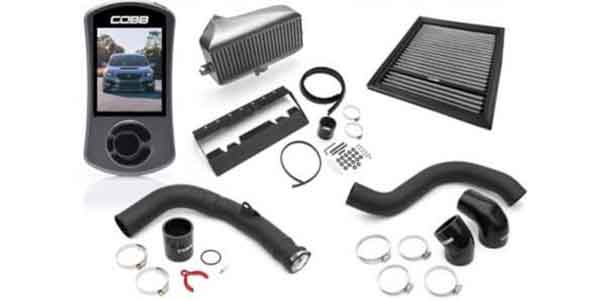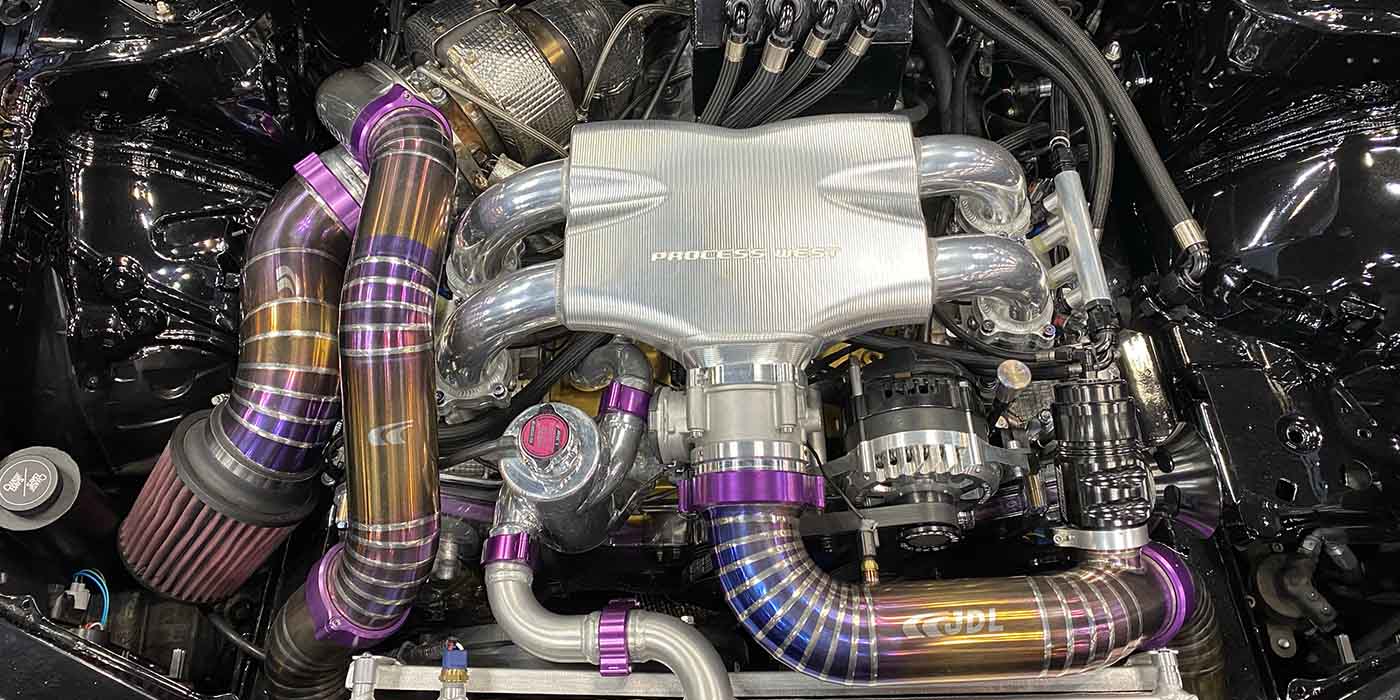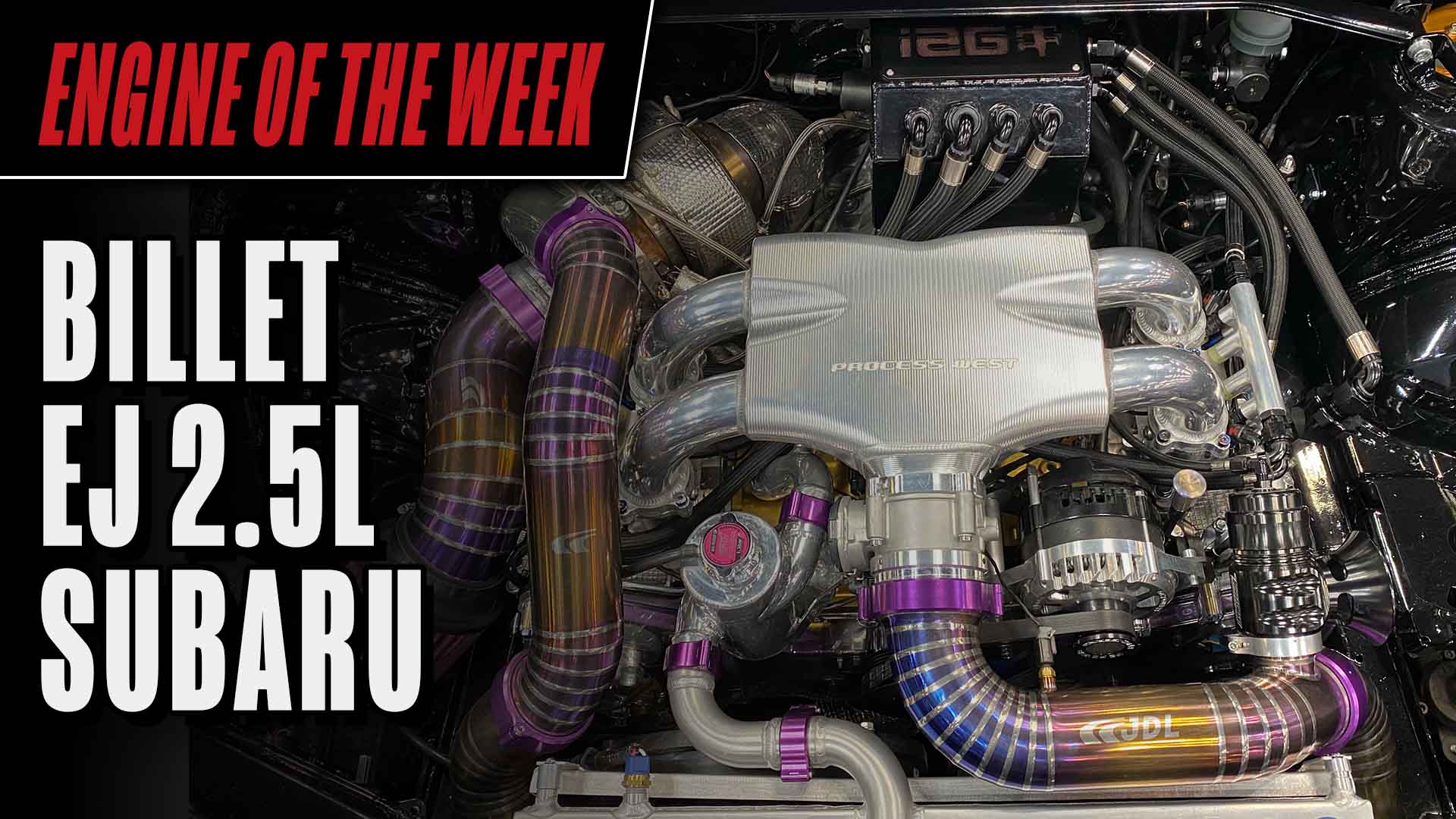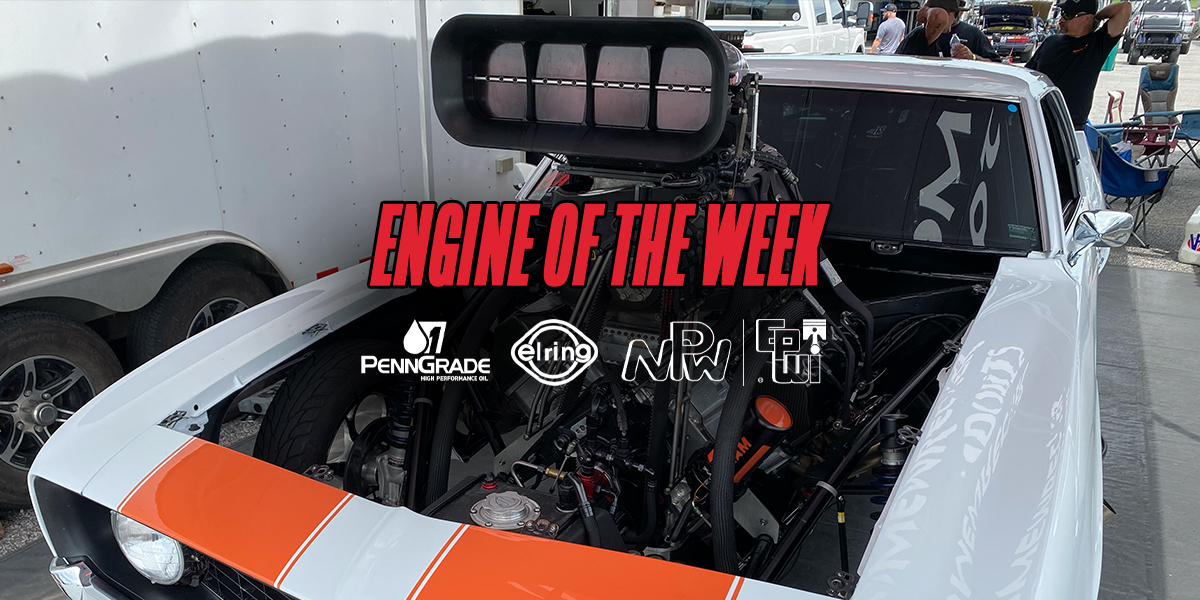When the Impreza WRX debuted in the fall of 1992, Subaru chose to continue their long-standing use of the boxer engine – it’s infamous flat 4-cylinder that would see great success on the World Rally Cross stage. In fact, Subaru adopted the name WRX to stand for World Rally eXperimental. While markets such as Japan and Europe got to experience the thrill of Subaru’s new turbocharged WRX platform, North American markets never received the WRX version of the first-generation Impreza.
It wasn’t until 2002 that Subaru decided it would share the WRX with the rest of us in conjunction with its launch of the second-generation Impreza. All WRXs (1992 to present) feature rally inspired technology, including all-wheel drive, stiffened suspensions and turbocharged 4-cylinder engines.
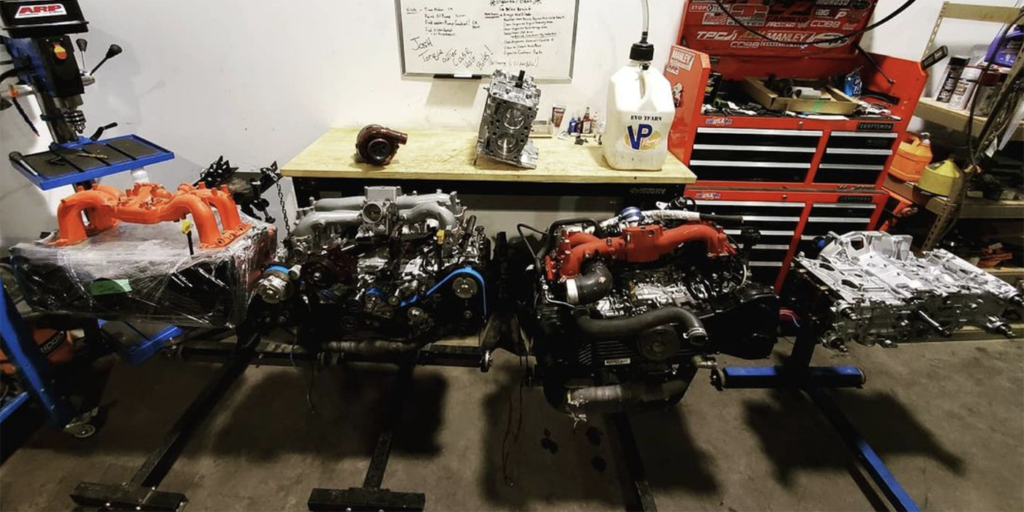
In 1994, Subaru introduced Subaru Tecnica International (STI badged) versions of the WRX in Japan. These models were upgraded from the standard WRX in many categories, including blueprinted performance-tuned engines, transmissions and suspensions. The STI versions of the WRX were immensely successful in rallies and popular among street racers, but again, were only sold in the Japanese market until 2003, when it came to the U.S. following Subaru’s big splash with the WRX the year prior.
Obviously, the WRX has been around for quite some time as Subaru’s flagship, four-door performance car. Since the engines under the hoods of these vehicles pull from decades of racing heritage and are often atop the list of import performance-enhanced vehicles, we decided to take an in-depth look at the WRX engine architecture, the pros and cons of some of the engine variants for North America, and what it takes to build these engines up to handle serious horsepower.
The Engines in the WRX
When the Impreza WRX debuted, Subaru’s EJ four-stroke engine family was selected as the powerplant. All engines of this series are 16-valve horizontal flat-fours with configurations available for SOHC or DOHC. Both naturally aspirated and turbocharged versions were available, however, the EJs for the WRX are all turbocharged and DOHC.
The first WRX models to hit domestic soil had an EJ engine known as the EJ205, which was a 2.0L DOHC turbocharged engine that produced somewhere in the vicinity of 227 horsepower factory rated. This engine was very reminiscent of any other EJ platform that had come before it as far as how the block looked physically and how it went together. The EJ205 features a 75mm stroke and a 92mm bore.
In 2006, the U.S.-marketed WRX model changed engines to the EJ255 – a 2.5L variant that was also present in the Forester and Legacy models.
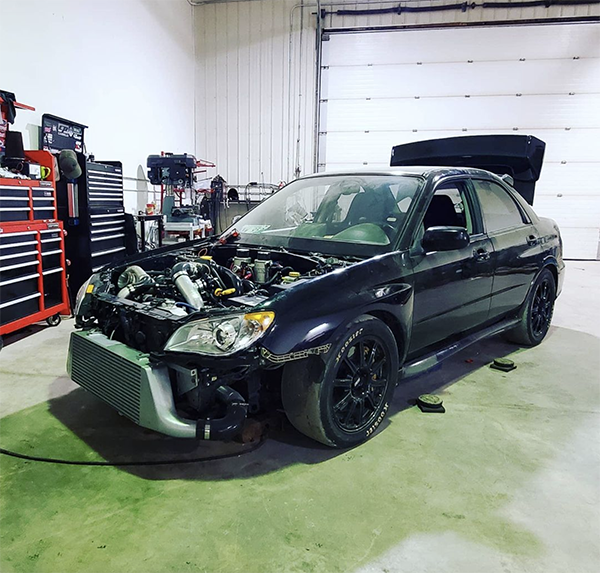
“They dubbed it the EJ255 and it was almost identical to an STI block or an EJ257,” says Justin Anning, owner of Nemesis Performance, a Subaru-focused shop in Manitoba, Canada. “The difference with this engine variant was that it was now upped from a 75mm stroke to a 79mm stroke, which is shared with the STI (EJ257). The same with the bore, which is 99.5mm and is the same as the STI as well. The EJ255 came with D25 cylinder heads and a less aggressive profile camshaft. It also came with a smaller version of the STI turbo.
“This engine was also when Subaru introduced the AVCS (Active Valve Control) system to the WRX. It has a hydraulically controlled cam advance on the intake camshafts using oil pressure and oil control solenoids.”
As mentioned above, another well-known WRX variant of the EJ family is the EJ257, which is also a 2.5L, but is only found in the STI models. The EJ257, like the 255, features a 79mm stroke and a 99.5mm bore. It also has a factory forged crank, forged rods and a single-scroll VF48 turbocharger.
Between 2008 and 2011, Subaru would make some minor adjustments to the WRX engine, specifically moving to a plastic intake manifold and a plastic intercooler tank. It still had the same injectors and it still had a small turbo until 2011, when they switched over to what’s known as the VF52 turbo, which better resembled what STI owners got.
Fast forwarding to 2015, Subaru made big changes to the WRX engine by introducing a new engine family known as the FA20. This was an entirely new animal from the EJ family. A direct-injection, twin-scroll turbocharged engine, the FA20 for the WRX featured revised camshafts, rocker arms, boost pressure, intercooler, and exhaust to increase peak output from previous variants to nearly 270 horsepower. It was also no longer over-square, but rather perfectly square, featuring an 86mm bore and 86mm stroke.
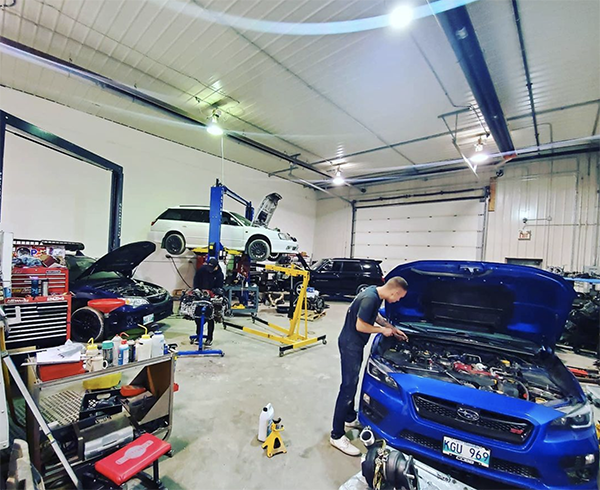
“These FA motors are just wildly different than an EJ, even though on the surface they may appear the same,” Anning says. “They have a cam cradle rather than cams just sitting in the head. There’s an actual bolted cradle system that drops the cams in as well as a lower girdle on the block. All of the things that seem to be an issue with the EJ seem to be addressed with the FA.”
The FA20 engine is still being used on WRX models today, and people are beginning to figure them out much like they did with the EJ WRX and STI engines.
The Pros and Cons
According to engine builders like Anning, who work on WRX engines regularly, the EJ205 is a very stout and strong engine, even in stock form. In fact, Anning says this variant has increased durability over the EJ257.
“The EJ205 is down on displacement, which is a bit of a con because you lose a little bit of that torque, but the power delivery is quite linear when it comes to upgrading them,” he says. “They bode well for the track and road racing. For whatever reason, they don’t seem to suffer from some of the known problems that the EJ257 and EJ255 have.
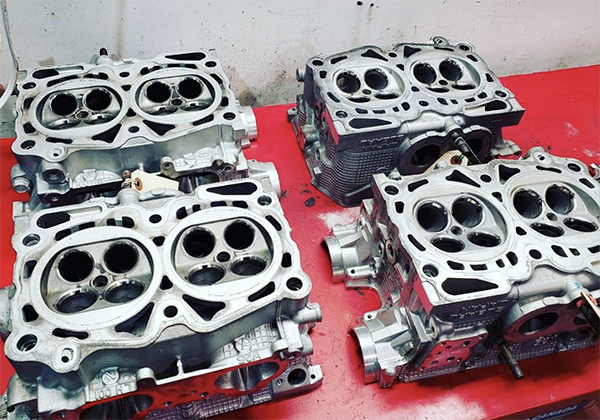
“They’re a plentiful, cheap, easy-to-build engine that seems to be more durable than a 257, but the cons again would be a smaller turbocharger and the power output capacity is a little less than a 257 or 255.”
When the EJ255 was introduced, immediately, you stepped up from a 2.0L to 2.5L, so WRX fans gained torque and were offered an easier to drive vehicle.
“People like torque, so that’s why they went to a 2.5L, especially for North American consumers,” Anning says. “You got that extra half liter of displacement, and with how over-square it was, it produced torque really well. It had a better turbocharger, but some of the cons were the classic Subaru ring land failure and oiling issues that started with the EJ257 STIs.”
These newly designed EJ255 engines started using a new head casting designated D25, which were 51cc compared to the EJ257’s 56cc B25 heads. They still had AVCS on the intake cams only, and they also saw the introduction of secondary air induction that required new ports in the heads.
The new engine had a compression ratio 8.4:1, which was just a slight increase from the 8.2:1 in the STI. With the smaller head volume, the new EJ255 kept the bump in compression (8.4:1) to a minimum by using pistons with a deeper dish. Aside from those differences, the case, crank, rods, and camshafts are the same between the EJ257 and EJ255.
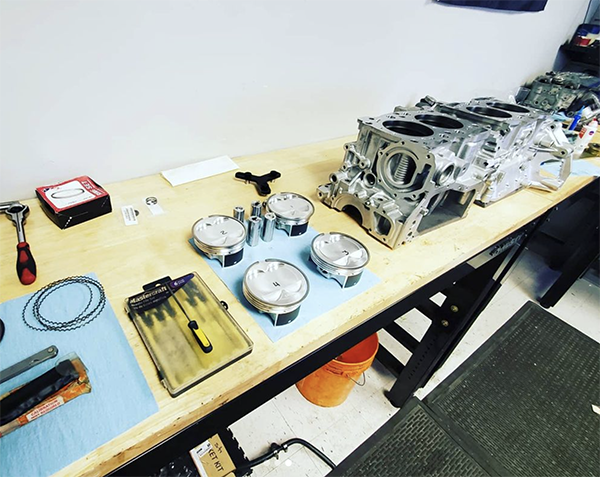
Due to the difference in piston dish and combustion chamber volume, it is not recommended to pair a D25 head with an STI block, or one that was designed to work with B25 heads. In 2007, the STI (EJ257) saw the introduction of secondary air injection, which required Subaru to make a new head casting designated V25. The only difference between the previous heads was the addition of the secondary air ports.
In 2008, the STI received a more significant update to its engine, that mostly involved another redesign of the heads to include AVCS on the exhaust cams in addition to the intake cams. These new dual AVCS heads are designated W25 heads, and they also support secondary air injection. The combustion chamber volume is still the same, so the EJ257 still runs an 8.2:1 compression ratio.
Looking at the short block of the 2.5Ls, in 2009, Subaru introduced a nitride-treated crankshaft, which can be retrofit into older blocks as well. When Subaru introduced this new crankshaft, they also put in new rods in the STI, which were designed to be slightly stronger than the previous rods, but still don’t match up to most aftermarket rods.
When it comes to the first generation of the FA20 direct injection twin-scroll turbocharged engine, this was quite a change for the WRX as far as engine design.
“With the FA20, immediately you had an engine that has today’s technology in it,” Anning says. “Subaru jumped from a 20-year-old design to something that’s a little bit more modern. You have a hydraulic roller rocker valvetrain system, you have AVCS on both intake and exhaust. You have a Garrett Honeywell turbocharger, which is a very durable turbocharger compared to the turbos on some of the older models.
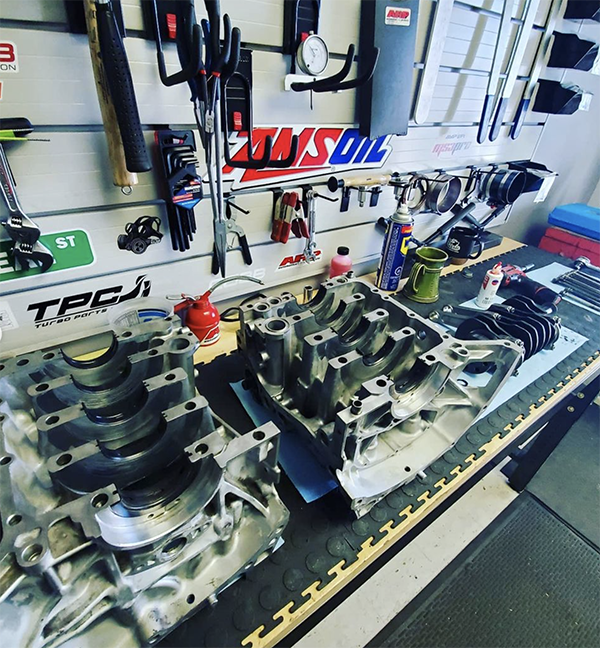
“The twin-scroll turbocharger helps retain a good, low end torque and it’s proven to work quite well. It’s what we call a low-mount turbo. It sits underneath the oil pan and in front of the engine. In the older variants and in the STI, the turbo sits between the engine and the firewall on the passenger side.”
Some of the cons of the FA20 include asymmetrical connecting rods. They are known for being weak, so you have to watch how much torque you’re putting out with them. From a tuning standpoint, however, the WRX has always had a good ECU with a lot of capability.
“In my opinion, the WRX ECU had good feature saturation,” he says. “They always came equipped with things like EGT sensors in the up pipe, which from a tuning standpoint, is a very useful tool. These FA20s kept that, but they also have an oil pressure monitor and they have a true wide band oxygen sensor made by Bosch. When you’re looking at it from a tuning standpoint, they came with a lot of great factory equipped options that are accessible and monitorable and make tuning them really nice.”
A final pro for the FA20 is the equal length header, which is a straight shot that comes from each bank towards the center and where the turbocharger mounts.
“You’re going to have quite a velocity increase of the hot exhaust gas to help spool that turbo up in such a short run,” Anning says. “The hotter the air and the shorter the run, the less it can cool down and keeps expanding into the turbocharger.”
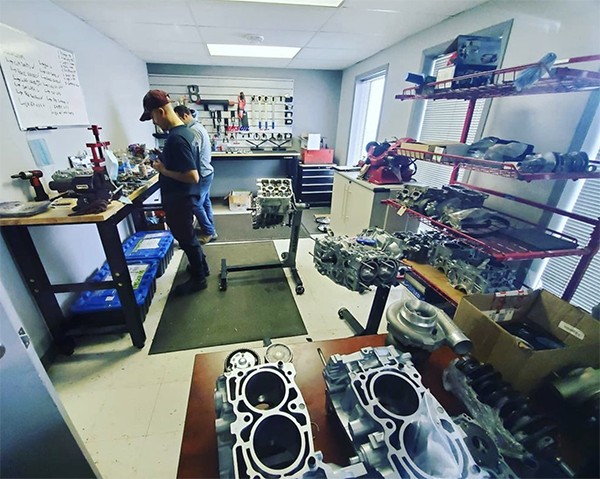
Building WRX HP
In stock, factory form, WRX and STI engines are no slouches. They are good, reliable powerplants that pack a punch. Because that’s the case, they’re also prime options for high-end performance applications, which means more horsepower. The different engine variants clearly have their pros and cons, but they all can be built up to handle a great deal of power using quality aftermarket parts and some good machine work.
According to Anning, when it comes the EJ205 engine, an upgraded piston and rod combination is where he starts.
“I would do a torque plate hone job for a .5mm oversize piston to ensure that the bores are straight,” he says. “We don’t use drop-in pistons. We want to control our destiny, so we’ll bore and hone to our specs and upgrade the piston and rod combination.
“If you’re feeling up for it, you can also build a stroker motor by stroking them up to about a 2.1L using an STI crank in that 2.0L build. The power capacity is 227 horsepower from the factory, but with some careful tuning and the right modifications, you can make over 500 hp no problem.”
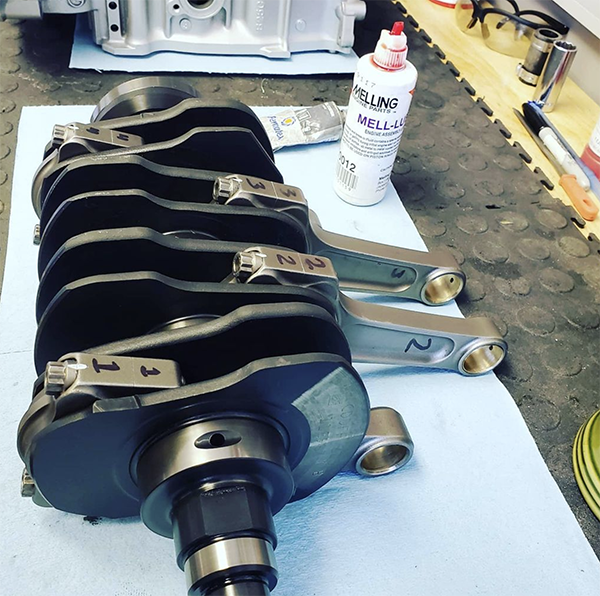
Building up the EJ257, which is in the U.S.-marketed STI, you already start with a factory forged crank and factory forged rods, but the pistons are not forged, which leads people to upgrade the engine due to failures. The rod bearings are also a weak point to watch.
“Typically, what happens is they’re consuming a lot of oil because they’ve cracked a ring land on the piston,” Anning says. “The vehicle still runs fairly well, especially when the turbocharger comes online, it creates enough compression that you don’t really notice it, but at idle you can tell that it’s hurt. We always tend to look at the pistons right away as well as the rod bearings. They tend to be a failure point. They end up spinning rod bearings quite often.”
When EJ257s come into Nemesis Performance, the shop completely strips them down and blueprints them for proper oil clearances in performance-minded applications.
“They’re outfitted with a fresh set of new connecting rods if the build has a horsepower output higher than what the factory rod is capable of,” he says. “One hundred percent of the time we’re doing pistons no matter what, because that is the next weak point. If you didn’t spin a rod bearing, you’re going to crack a ring land.”
Most of the time, customers are building up the EJ257 for street car, drag racing or road racing applications, and if customers want to find a lot of power, Nemesis Performance addresses an inherent weakness in the structure of the cylinder blocks.
“We put it on our Haas CNC and we actually machine what is called a closed-deck block,” he says. “Basically, the cylinders and what supports them in the block is only held together by four little tabs. As boost increases and horsepower increases along with the harmonics that come with horsepower, they will actually crack the cylinder liner. That block now needs to be repaired and needs sleeves.
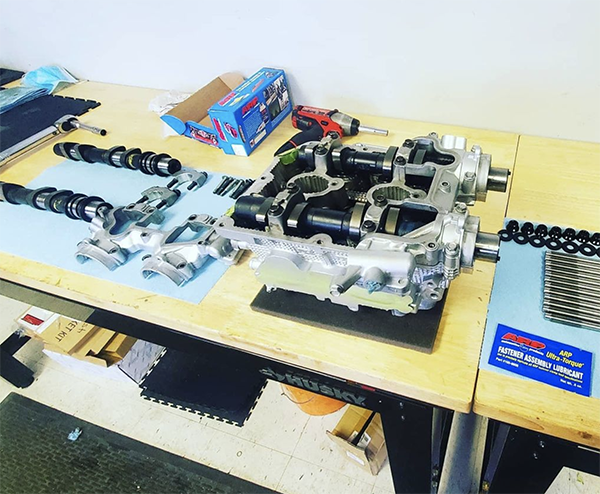
“We’ve adopted the philosophy of scanning the block into a CAD. We’ve designed these inserts that get machined. The block gets machined and the inserts get pressed in and effectively close the upper deck of the block and supports the cylinder structure right where it’s required, which is usually right where all the combustion force is happening in the first half-inch of the block.
“Not only does it create a more robust engine, but you have a significantly increased clamping surface for the head gasket, which is another inherent problem of Subarus too. You’re getting the best of both worlds. You’ve got more surface area to clamp the head gasket and keep its integrity intact, as well as keeping the rigidity and supporting the cylinders from moving and cracking.”
Anning suggests that if a customer desires to go north of 500 horsepower or in excess of 30-lbs. of boost, a closed-deck block is a requirement for added protection.
“That’s not to say you can’t do it without this modification, but you’re really pushing the limits of everything at that level,” he admits. “The upgrades we look at performing are in oiling, hypereutectic pistons instead of forged and the deck architecture of the block itself.”

The 2.5L EJ257 can make 300-400 horsepower in stock trim with some simple bolt-ons. But, when you start getting into substantially larger turbocharger systems, Anning has personally built 257s in the 800-horsepower range and above.
“Commonly though, that’s just not for everybody,” he says. “Most of those builds are around the 500-650 horsepower mark for the 2.5L. However, some guys are cracking 1,000 hp.”
If you’re building up the EJ255, the 2006-2014 WRX 2.5L, which comes with 260 horsepower, this build would also require an upgraded piston and rod combination, a torque plate hone and the proper bearing clearances to be set, because oiling issues and ring land failure was very predominant in these engines as well. It’s also a good idea to move to an upgraded, high-flow oil pump.
“With these cars, what you want to make sure of is that the main line is straight and concentric,” he says. “They tend to shuffle around and kind of pinch up or tighten up in certain areas. Those clearances depend on what you’re planning to do with the car. If it’s a drag car, it only has to live a certain amount of passes. You’re going to go really loose on everything to try to help with the heat and whatnot. If you’re doing a mild build, you’re going to go on the looser side of the maximum spec from the factory service manual. Again, what’s important to these cars is that the main lines are true and straight.”
The power capacity of the EJ255 depends on whether you do closed-deck conversions or not. According to Anning, you can make an easy 700-800 horsepower with these engines, or more if your budget allows.
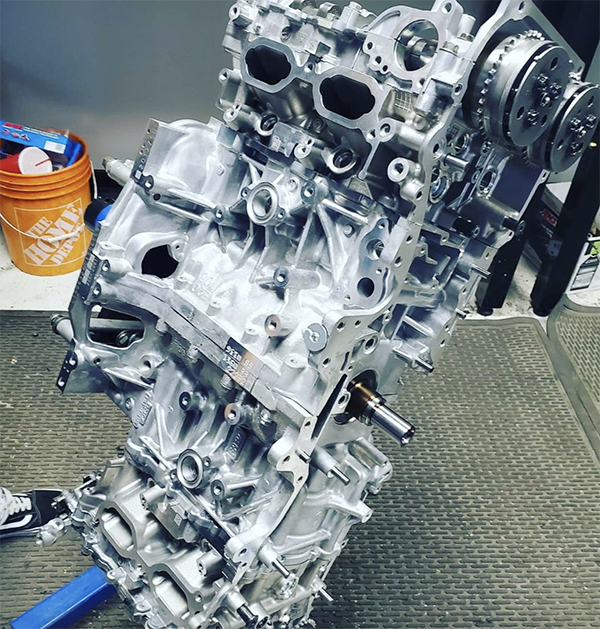
“The 255 engine is very similar to the 257 and it’s not limited in any capacity compared to the 257,” he says. “It could be built up to the same standards that you could with the 257, which is nice because parts are readily available and interchangeable.”
When it comes to the FA20 engine, Subaru did fix a number of issues from the EJs, but the biggest weakness are the connecting rods if you’re looking to pump more horsepower.
“With the FA20, we know the rods are weak, so you have to upgrade the rods, and if you’re upgrading the rods, you might as well upgrade the pistons too,” he says. “You can swap to a big turbocharger and that’s what most people are doing. The FA20s also respond well to ethanol. If you use that fuel, you can see a nice bump in horsepower without having to tax the fuel system. I’ve seen the FA20 engine built up to be capable of 600 horsepower. The factory crank is very stout on these cars too. You can choose to upgrade it or you can choose to stick with the stock one and you’d be fine at 600 horsepower.”
One nice thing about the FA20 is the oiling system shouldn’t need any work as Subaru made sure to fix the issues commonly seen in the EJs by implementing an upper and a lower oil pan.
“The upper is very reminiscent of a girdle,” Anning says. “What they’ve also done on the short blocks of the FA20s is they dowel pinned the mains. The EJ does not use main caps. The other half of the block houses the main caps for the main bearings. They found that the EJ engines move around, so what they’ve done on the newest generation FAs is doweled those mains together, so it’s not just relying on bolt pressure alone to hold everything true. That mated with the upper and lower oil pan and a different oil pump has really addressed those issues with the newer generations.”
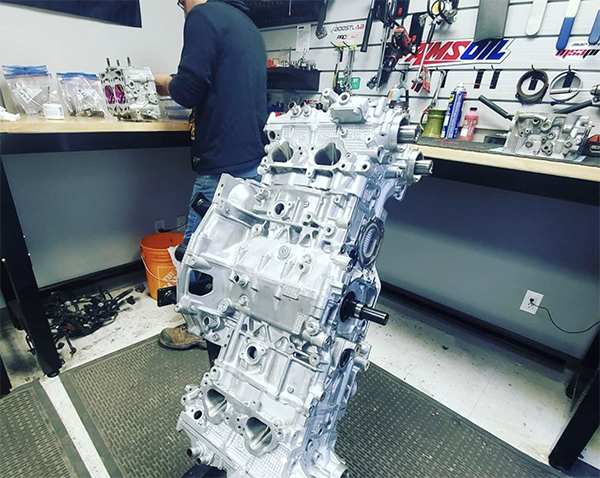
If you’re upgrading any of the WRX or STI engines, the valvetrain is also an area you’ll want to pay some attention to. Anytime you’re increasing boost to an engine above and beyond what it was factory intended for, it’s recommended you upgrade valve springs, retainers and possibly your camshafts as well.
“If the factory equipped turbocharger is no longer cutting it anymore and you need to step up to a larger turbocharger, that’s around the time you should start considering not only a built-up engine, but a built-up valvetrain as well,” Anning says. “The stock camshaft can hold up for certain power levels, but if you’re going to upgrade certain aspects of the valvetrain, you might as well upgrade the camshafts too. For my customers, it always comes down to budget. If it’s in the budget, then we always recommend it.
“The camshafts help shift the power and make the engine more efficient at higher rpm, which is kind of where these import engines like to live. A bigger cam profile with more duration is typically where it goes. Manufacturers like BC, GSC, Kelford – they’re all making camshafts that are specifically designed for these cars. You will get to a certain point where the stock camshaft won’t handle what the turbocharger is trying to push out.”
The valvetrain between the FA and the EJs are substantially different. The EJ205, EJ255 and EJ257 are all very similar, however.
“The STI (EJ257) had solid buckets. The early version 205s had a shim over bucket. Now, the FA20 is a roller rocker design with an HLA bucket, so it can hydraulically adjust its own lash,” he says.
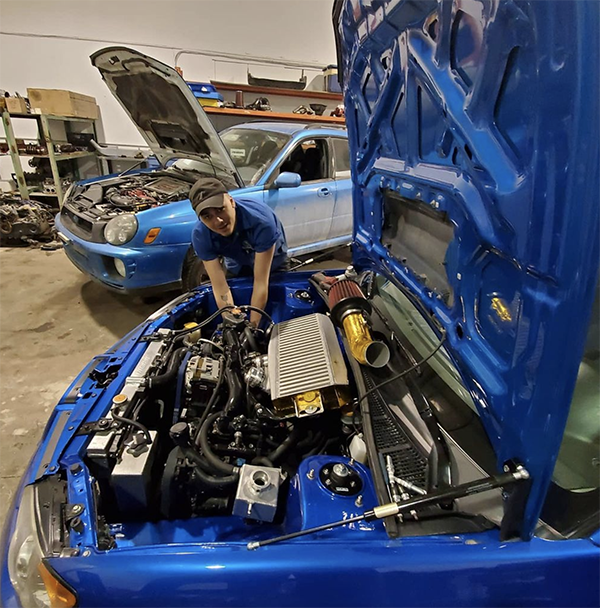
Of course, before any high-horsepower performance engine is truly ready to rip, the engine needs to be properly tuned, which is something Anning says some folks in the Subaru world don’t do correctly and it costs them.
“You have to ensure you have really good tuning,” he says. “When you buy these cars, most people put an intake system on and an exhaust system, and then they’ll run an ‘off-the-shelf’ tune, which is a very generalized tune that’s not made specifically for your dynamic elevation and your quality of fuel in your region. Therefore, you’re not getting the engine completely optimized.
“In the case of the 255s and 257s, when you run these ‘off-the-shelf’ maps for quite a long time, they tend to blow up since it’s so broad and not vehicle specific. Making sure you’re running good oil and good fuel means you should definitely have longevity on your side.”
Conclusion
Clearly, WRX and STI Subaru engines continue to be top Japanese tuning platforms, and it doesn’t appear that will end any time soon. The WRX and STI are both summer performance cars that are equally happy on the street as they are on the track or in rally racing.
Since the WRX has been around for 20 years here in North America, people have really figured out how to manipulate the EJ engines, and the FA engines are quickly following suit. The only thing holding your WRX back is your budget! EB

